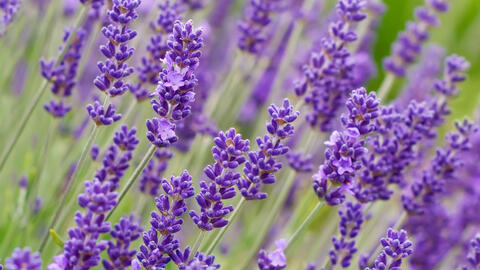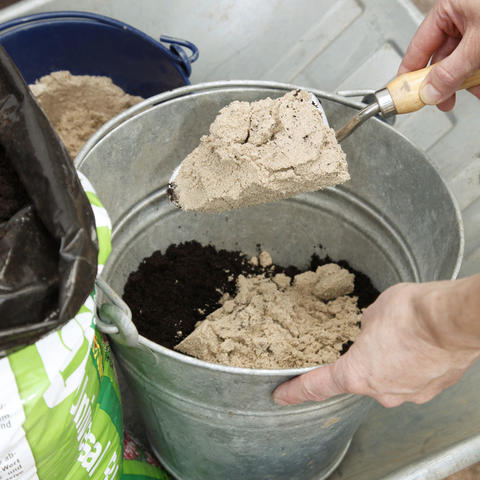How to fertilize lavender: Dosing nutrients sparingly
If you fertilize your Lavender too much, you are not doing the Mediterranean semi-shrub any favors. The fragrant flowering shrub is adapted to nutrient-poor soils and requires only very few, selected nutrients.

Lavender smells most intense when it is watered little and not fertilized
Many balcony gardeners cultivate Lavender in flower pots or balcony boxes throughout summer. And pot lavender is also a wonderfully fragrant decoration for patios. Planted out in the bed, lavender accompanies flowering perennials and attracts many insects with its purple flowers. Another benefit is that lavender is a low maintenance plant. As a Mediterranean plant, it is undemanding and flourishes even in warm summers, as it does not require extra watering or fertilizer.
Lavender is a semi-shrub, which grows in its Mediterranean homeland on dry and sunlit slopes on stony ground. It is also a plant that has adapted to live with few nutrients. Lavender prefers a root environment that is low in humus, mineral and calcareous and it generally prefers to be dry rather than too wet (even in winter!). A soil that is too rich in nutrients leads to rapid growth of lavender and has a negative effect on the abundance of flowers and aroma of the plant Therefore when fertilizing lavender, you should preferably use a low nitrogen and rather alkaline fertilizer. Ideal are slow-acting organic fertilizers such as compost that are mixed in small quantities directly into the plant soil. Horn shavings, Bark mulch, peat and conventional flower fertilizers are not suitable for lavender because of their high nitrogen or acid content.

For a long time it was recommended to supply lavender in a pot with flower fertilizer every 14 days. Yet in reality, this strategy does more harm than good. Although the plant substrate leaches out faster in the pot than in the bed and the roots have less room to grow, even here a 14-day lavender fertilization would be more than excessive. Particularly nitrogen-emphasized flower fertilizer mainly leads to excessive length growth, whereby the shrub is balding from below and does not grow very densely. For an optimal supply of nutrients in the pot, lavender should be in the right substrate (well drained, loose and calcareous), then a mild re-fertilization twice a year is sufficient. Lavender planted in a pot should be fertilized for the first time at the beginning of the growing season in June, the second time after the first flowering — with a little luck you can stimulate the plant for a second flowering.
A Lavender shrub planted in the flower bed does not require additional fertilizer. Lavender forms a dense and deep root system relatively quickly, Rooting system, with which it can easily draw the few nutrients it needs. Just as in the pot, an over-fertilized lavender in the bed tends to lose its original growth form and density. In severe cases, the plant can even wither completely. So avoid adding any fertilizer to the flower bed to see a compact and robust lavender grow. Plants without fertilizers can also survive winter better. If you wish to mulch your lavender , use gravel or sand. Just one exception: If you have prune an old lavender shrub to rejuvenate it after flowering, a restrained one-off fertilization can stimulate new branches.



